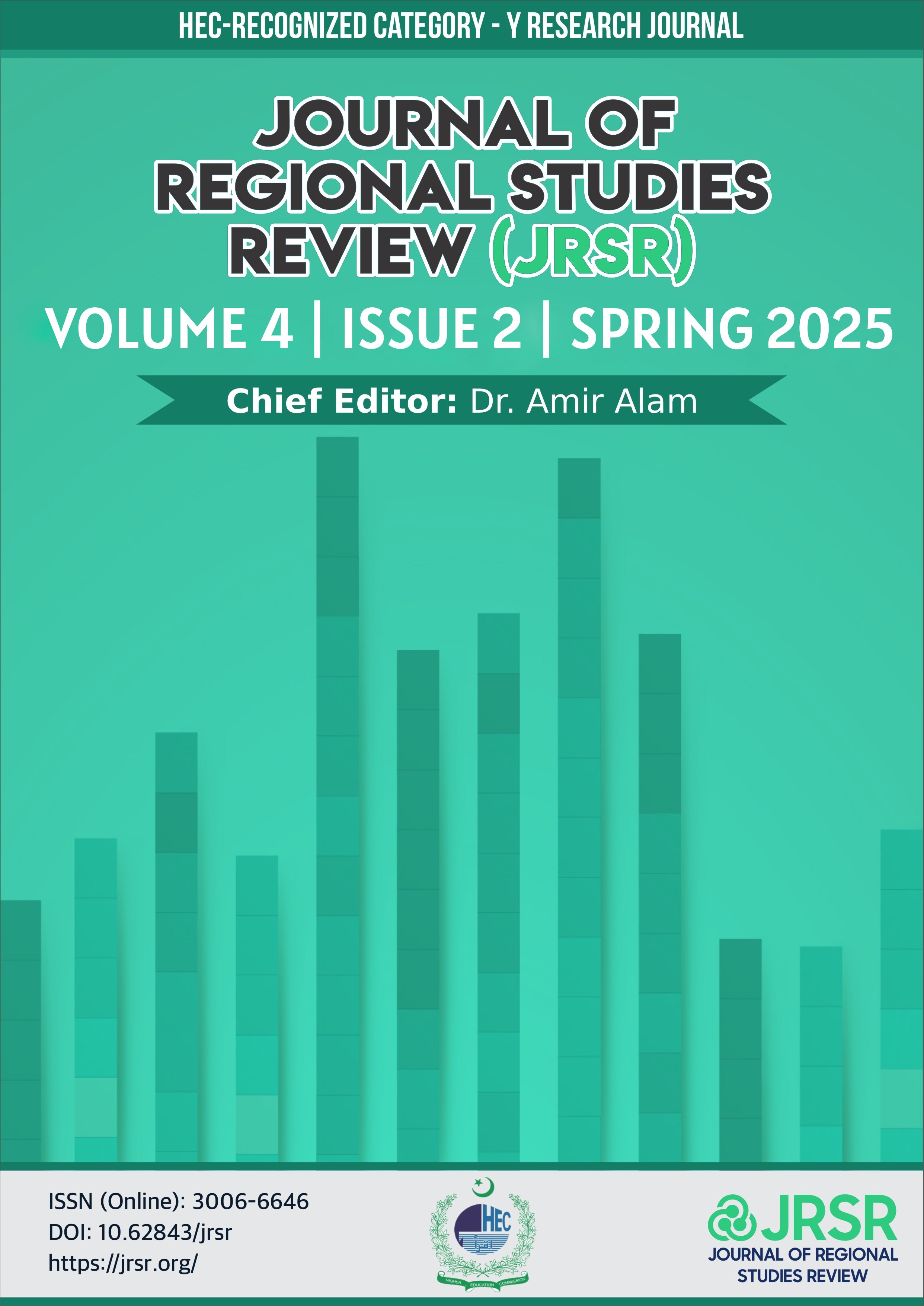Simulacra, Simulation, and the Politics of Representation in Arundhati Roy’s The Ministry of Utmost Happiness
DOI:
https://doi.org/10.62843/jrsr/2025.4b119Keywords:
Hyperreality, Simulacra, Media Representation, MisrepresentationAbstract
This study examines how Jean Baudrillard’s concepts of simulacra, simulation, and hyperreality inform the representation of characters, events, and institutions in Arundhati Roy’s The Ministry of Utmost Happiness. The analysis highlights the pervasive role of media, advertising, religion, and government in constructing distorted versions of reality that shape individual and collective perceptions. Through characters such as Anjum, Saddam Hussain, Biplap Dasgupta, and Naga, the novel reveals how hyperreality influences identity, marginalizes minorities, and sustains dominant power structures. Events such as the 9/11 attacks, the Gujarat violence, and the Kashmir conflict are reinterpreted within the framework of hyperreality, where images and signs replace lived experience and meaning. Roy further critiques the manipulation of truth, the misrepresentation of Muslims, hijras, and lower castes, and the commodification of culture through advertisements. While exposing the human cost of a hyperreal world, the novel also emphasizes resilience, alternative narratives, and the possibility of resistance. This paper argues that The Ministry of Utmost Happiness serves as a powerful literary critique of postmodern society, where representation frequently supplants reality and human consciousness is reshaped by mediated constructs.
References
Alam, M. (2021). Media and ideology in Arundhati Roy’s The Ministry of Utmost Happiness. Journal of Postcolonial Writing, 57(4), 510–525.
Allan, K. (2008). Contemporary social and sociological theory: Visualizing social worlds. Pine Forge Press.
Barnard, M. (2010). Approaches to understanding visual culture. Palgrave Macmillan.
Barad, K. (2012). Meeting the universe halfway: Quantum physics and the entanglement of matter and meaning. Duke University Press.
Baudrillard, J. (1983). Simulations. Semiotext(e).
Baudrillard, J. (1991). The Gulf War did not take place (P. Patton, Trans.). Indiana University Press.
Baudrillard, J. (1994). Simulacra and simulation (S. F. Glaser, Trans.). University of Michigan Press.
Baudrillard, J. (1995). The Gulf War did not take place (P. Patton, Trans.). Indiana University Press.
Best, S., & Kellner, D. (1991). Postmodern theory: Critical interrogations. Guilford Press.
Hall, S. (1997). Representation: Cultural Representations and Signifying Practices. London: SAGE Publications Limited.
Chen, K. H. (1987). Mass media and the redefinition of reality. Journal of Communication, 37(4), 70–81.
Onal, A. (2019). Reality and hyperreality in postmodernism: A critical analysis. Journal of Humanities and Social Science Studies, 1(3), 65–75.
Poster, M. (2001). What’s the matter with the Internet? University of Minnesota Press.
Roy, A. (2017). The Ministry of Utmost Happiness. Hamish Hamilton.
Smith, R. G. (2010). Baudrillard dictionary. Edinburgh University Press.
Wolfreys, J., Robbins, R., & Womack, K. (2006). Key concepts in literary theory (2nd ed.). Edinburgh University Press.
Wolney, R. (2017). Simulacra and the problem of representation in Jean Baudrillard’s philosophy. International Journal of Philosophy and Theology, 5(1), 72–84.
Downloads
Published
Issue
Section
License

This work is licensed under a Creative Commons Attribution-NonCommercial 4.0 International License.



